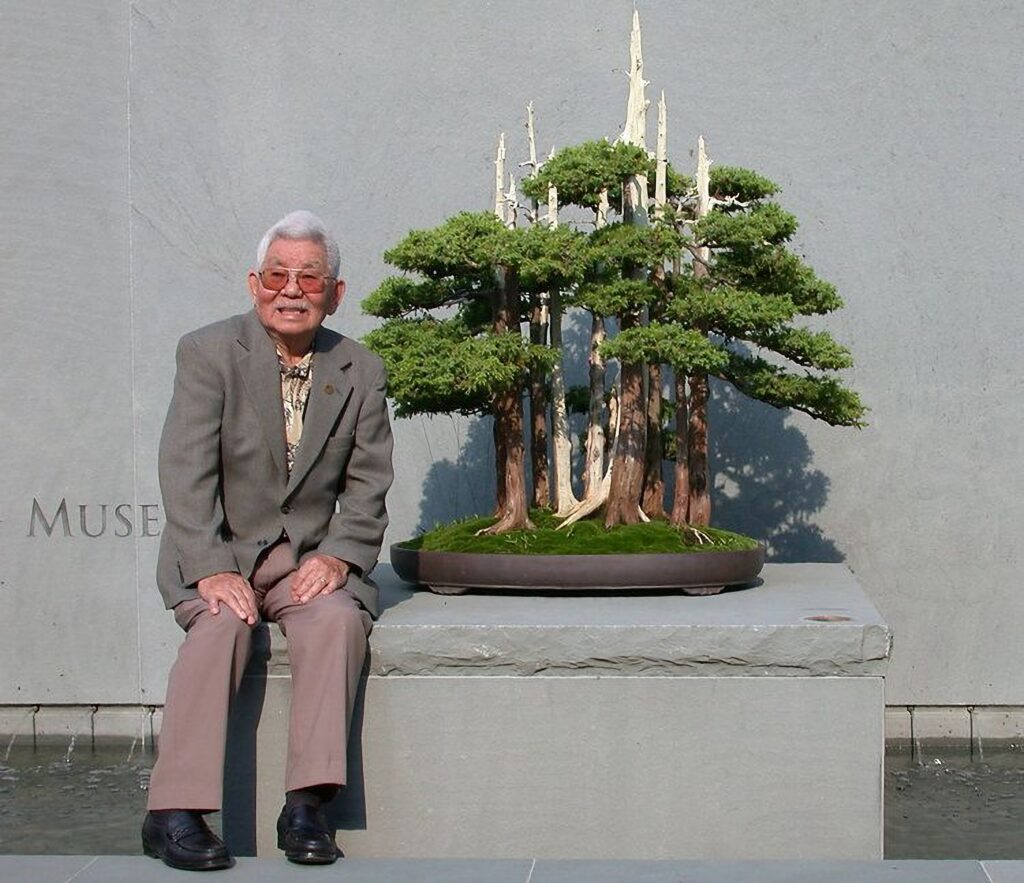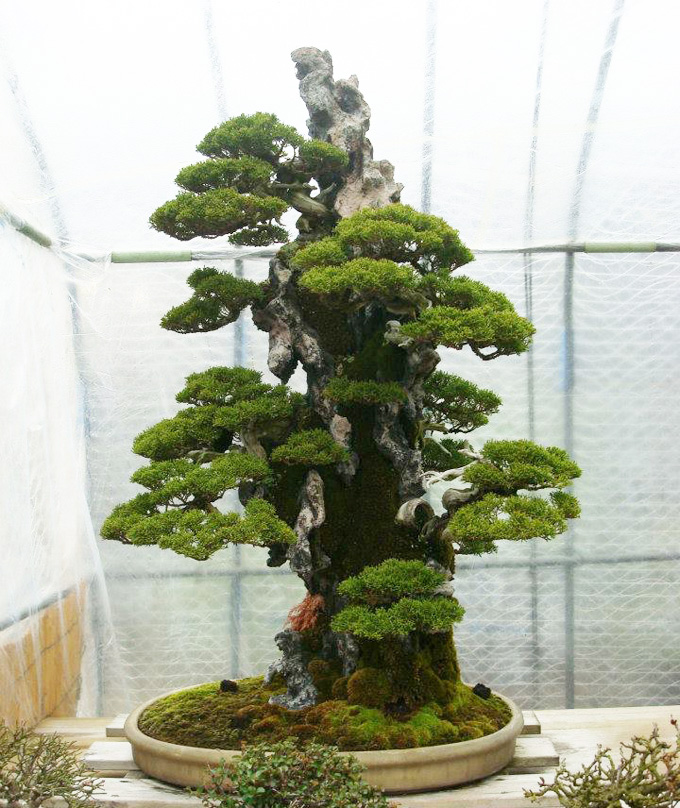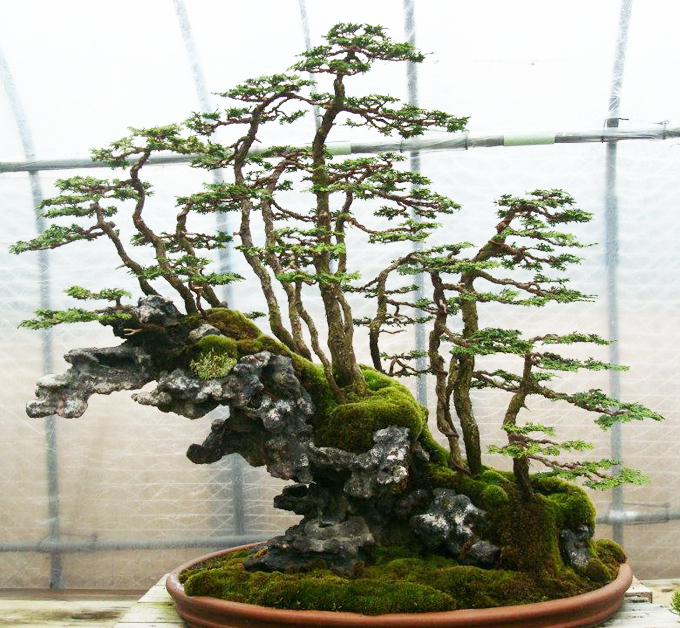
Photo: John Naka, Wikipedia
Many people the world over have seen Bonsai, maybe on movies such as Karate Kid, or at their local conservatories. Maybe even some people have friends, or relatives who raise the tree’s, or they have seen Bonsai in a garden center. These stunted trees have a very long history that goes back thousands of years to ancient China and Japan.
The word Bonsai derived from the Chinese word Penzai (盆栽) which means potted plant. During the Tang Dynasty Penzai was at its stylistic height. The stunted trees were favored by Buddhist monks, scholars and royalty. The trees were planted in shallow trays and decorated scholars rooms, temples and courtyards. It was common to display your tree for guests, especially if it were of flowering or fruiting variety. Bonsai were sometimes put on both sides of Buddhist statues as well. These little trees were found in nature by scholars who enjoyed the beauty of what nature can create. These scholars would travel risking their lives many times, to collect trees from the wild which had great potential to become a piece of living art. These wild pieces of art are extremely rare, they are rare because of the conditions needed to create them. Hundreds of years of wind cutting the tree back, storms, lack of nutrition in mountain soil, and roots restricted by rock can sculpt a tree into a beautiful piece of art that scholars prized and named literati.
Japanese scholars and Buddhist monks fell in love with the Chinese Penzai and brought them back to Japan where they were then pronounced as Bonsai (盆栽). Over many years the Japanese refined the art form and were inspired by the nature and organic perfection of pine trees. In 1950 John Naka (better known as the father of American Bonsai by Bonsai enthusiasts) and his friends established the California Bonsai society, which became an important vehicle for the birth of Bonsai in the United States. Master Naka was known for his work with forest plantings and conifers, and he used mostly native variety of trees in his projects. In 1976 Japan gifted 53 Bonsai to the United States which then eventually led to the founding of the National Bonsai and Penjing Museum in Washington D.C.

Photo: Asian Media Access
These little trees depict natural scenes, forests, and can even look like distant mountains with rivers and fog when created and maintained by a professional Bonsai artist. Have a look at the photo below, notice the illusion of distance in the planting. Such small trees can have a big artistic impact on the viewer.

Photo: Asian Media Access
The Chinese are famous for their masterful rock and tree plantings. The plantings range in size from less than a foot to well over 4 feet. One can say that it was the scholars visions of China’s great mountains that led to this style of this art today. In Japan the rock plantings are also popular, at one point they were much smaller than the Chinese plantings however Bonsai expert Masahiko Kimura totally went bold and created large masterful rock and tree plantings.

Photo: Alejandro Sartori

Photo: Alejandro Sartori
Today we are so lucky to be able to witness this incredible art of sculpting beauty with living wood. We can see the vision of the Bonsai or Penzai artist, we can see the distant mountains, forests and streams through their eye. If we can silence our inner-selves and allow the magnificent beauty of these trees to speak, we will be able to appreciate and be moved by these living works of art.
Jarrelle
